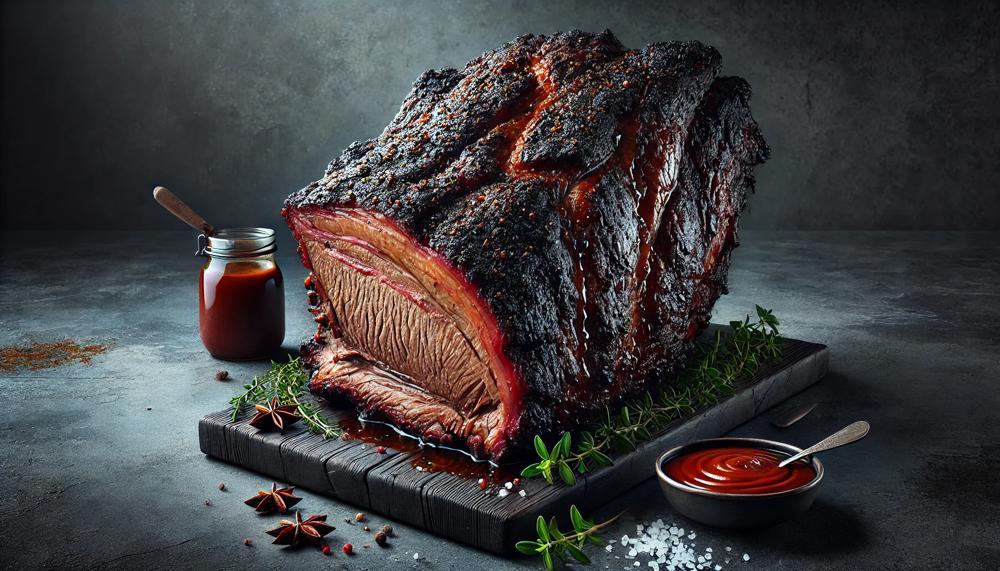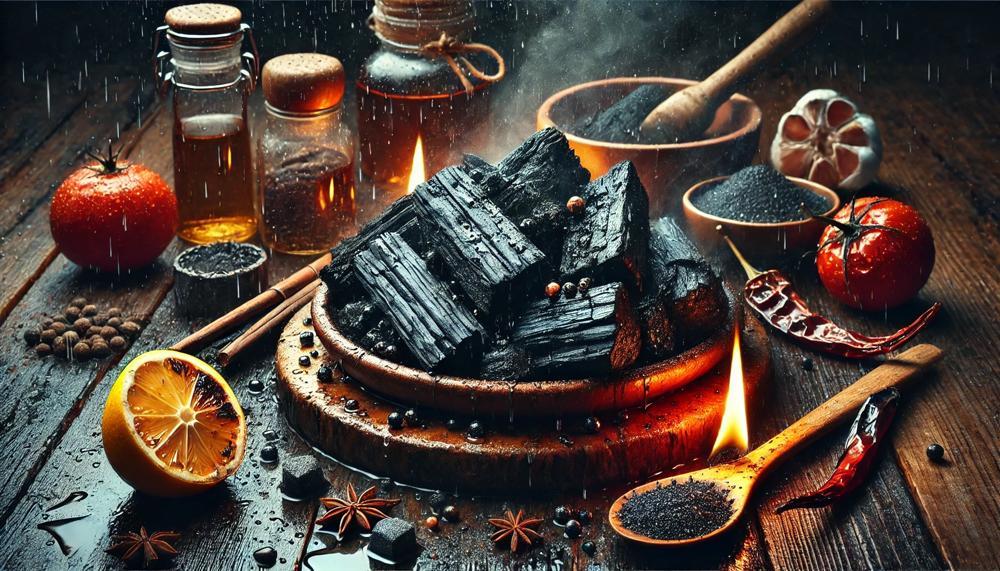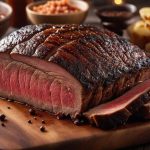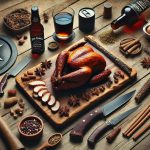Picture this: You’ve spent hours meticulously preparing your brisket, carefully monitoring the smoker, and eagerly anticipating that perfect balance of smoky flavor and juicy tenderness. But what if, in the midst of this culinary journey, you inadvertently cross the line between perfection and overcooking? What happens if you smoke a brisket too long?
Smoking a brisket is an art that requires patience and precision. While achieving that ideal texture and flavor is immensely satisfying, pushing beyond the optimal smoking time can lead to disappointing results. Here’s what you need to know:
- Texture Takes a Turn: Over-smoking can turn that beautifully tender brisket into a tough, chewy slab that even the sharpest knife struggles to cut through.
- Flavor Falters: Instead of a delightful smokiness complementing the meat, extended smoking can result in a bitter or acrid taste that overwhelms the palate.
- Moisture Loss: A prolonged smoking session can dry out the brisket, leaving it lacking the succulence that makes a perfectly smoked brisket so irresistible.
- Waste of Time and Effort: Hours of preparation and anticipation can be dashed with one misjudged moment, leading to a meal that falls short of expectations.
In this article, we’ll delve into the nuances of smoking brisket, understanding the signs of over-smoking, and most importantly, how to avoid this pitfall. Whether you’re a novice or a seasoned pitmaster, mastering the art of smoking brisket requires knowing when to say when. Let’s ensure your next smoked brisket is a culinary triumph, not a cautionary tale.
Contents
Why Is My Smoked Brisket Tough?
The main reasons your smoked brisket may be tough typically boil down to issues with the cooking process. Here’s a deeper dive into the key factors and how they affect the texture of your brisket:
- Undercooking: Brisket needs ample time to break down its connective tissues, which doesn’t happen properly if it’s undercooked. Proper cooking time allows these tissues to become tender and juicy.
- Temperature Control: High cooking temperatures can cause the proteins in the brisket to tighten and dry out quickly. Low and slow cooking is crucial for keeping the meat tender.
- Cut of Meat: Choosing the right cut is vital; the brisket is made up of the flat and the point. The point is fattier and tends to be more forgiving, while the flat is leaner and can become tough if not cooked correctly.
- Smoking Process: A consistent and controlled smoking process is necessary. Fluctuations in smoke or heat can lead to a tough brisket.
- Resting: After cooking, brisket should rest in a cooler or at room temperature to redistribute and retain its juices. Cutting into the meat too soon can cause these vital juices to escape, making the meat dry and tough.
- Moisture and Wrapping: Maintaining moisture with a water pan or wrapping the brisket in foil during the latter stages of cooking can prevent the surface from getting too hard and inedible, commonly referred to as “tough bark”.
Choosing The Right Cut Of Brisket
When selecting the perfect cut of brisket for smoking, a few key factors come into play, each crucial for ensuring a flavorful, tender result. Here’s what you need to consider:

- Cut Selection: Choose between the point cut, flat cut, or a whole packer brisket. The point cut is fattier and offers richer flavors, making it ideal for those who relish a juicier brisket. The flat cut is leaner and suits those preferring a firmer texture. A whole packer includes both cuts and is best for serving larger groups, offering a bit of both worlds.
- Grades of Beef: Opt for high-quality grades such as Prime, Choice, or Select. Prime grade has more marbling and generally results in a more succulent brisket.
- Fat-to-Meat Ratio: Look for good marbling (fat interspersed within the muscle), as it enhances flavor and tenderness during the long smoking process.
- Personal Preference: Reflect on your taste preferences and the specific brisket recipe you plan to use. This will influence whether a fattier point or a leaner flat cut is more appropriate for your dish.
- Cooking Style and Environment: Consider your cooking method and equipment. Some cuts may perform better in different smokers or at varying temperatures.
Below is a table summarizing the ideal choices based on these considerations:
| Factor | Point Cut | Flat Cut | Whole Packer |
| Preferred for | Rich flavor, juiciness | Firmer texture, less fat | Combination of both textures |
| Best used in | Smaller gatherings, flavor-focused dishes | Health-conscious meals, quick smoking | Large parties, varied preferences |
| Suggested grade | Prime | Choice | Prime or Choice |
Remember, the journey to a perfect brisket starts long before it hits the smoker; it begins with choosing the right cut.
How To Fix A Tough Brisket:
To revive a tough brisket and transform it into a succulent meal, follow these practical and simple steps:
Return to the Smoker
If your brisket turns out tough, consider giving it more cooking time. Low and slow is the mantra for tenderizing brisket.
- Temperature and Time: Aim for a smoker temperature of around 225°F (107°C). Continue cooking the brisket until it reaches an internal temperature of about 200°F (93°C), checking with a meat thermometer.
Resting the Brisket
After cooking, it’s crucial to let the brisket rest. This allows the juices to redistribute throughout the meat, enhancing flavor and tenderness.
- Rest Duration: Let the brisket rest wrapped in foil or butcher paper for at least one hour before slicing.
Making Burnt Ends
A popular rescue for tough brisket is to turn it into burnt ends, which are flavorful and tender.
- Preparation: Cut the brisket into 1.5 to 2-inch cubes. Season them again if desired, and return them to the smoker or a hot oven until the pieces are caramelized and tender.
Barbecue Tips and Guides – Kept Simple
- Choose the Right Brisket: Opt for a brisket with a good balance of marbling. This ensures flavour and tenderness during the smoking process.
- Preparation is Key: Trim excess fat to about 1/4 inch thick to prevent overly greasy meat. Season generously with a dry rub containing salt, pepper, garlic powder, and paprika for a robust flavour.
- Maintain Consistent Temperature: Aim for a smoker temperature around 225°F (107°C). Use a reliable meat thermometer to monitor internal temperature without opening the smoker too frequently.
- Control Smoke Levels: Use hardwoods like oak, hickory, or mesquite for a rich smoke flavour. Too much smoke can overpower the meat, so keep it light and consistent.
- Wrap at the Right Time: After a few hours (typically when the bark is set and a rich colour is achieved), wrap the brisket in butcher paper or foil. This helps retain moisture and prevents it from drying out.
- Monitor Internal Temperature: When the brisket reaches around 195-205°F (90-96°C), it’s ready. The meat should be tender and easily probe with a thermometer without resistance.
- Rest Before Slicing: Rest the brisket for at least an hour in an insulated cooler or on a cutting board loosely covered with foil. This allows the juices to redistribute, ensuring a moist final product.
Conclusion
Over-smoking a brisket transforms a potential masterpiece into a culinary disappointment. Here’s why attention to detail matters in the world of barbecue. Imagine overcooking to the point where the brisket, once primed for juicy succulence, morphs into a tough and chewy disappointment. The once tender fibers become stringy, the luscious fat crystallizes into greasiness, and the bark, that glorious crust, turns into an overbearing shield of bitterness.
The risks extend beyond texture and taste. Moisture, the essence of a mouth-watering brisket, evaporates under excessive heat and time, leaving behind a dry, fibrous block. This not only robs the meat of its inherent juiciness but also makes your slicing knife meet unexpected resistance, turning what should be effortless into a strenuous task.
Moreover, the smoky flavor, a signature of good barbecue, can overdevelop into an acrid smoke that masks the subtle flavors of the meat, overshadowing the nuanced blend of spices and rubs meticulously chosen for their enhancing properties.
To sidestep this pitfall, mastering the balance of time, temperature, and technique is crucial. By adhering to the optimal smoking period, not only do you safeguard the brisket’s moisture and tenderness, but you also preserve the hours of preparation invested into creating a memorable meal.






